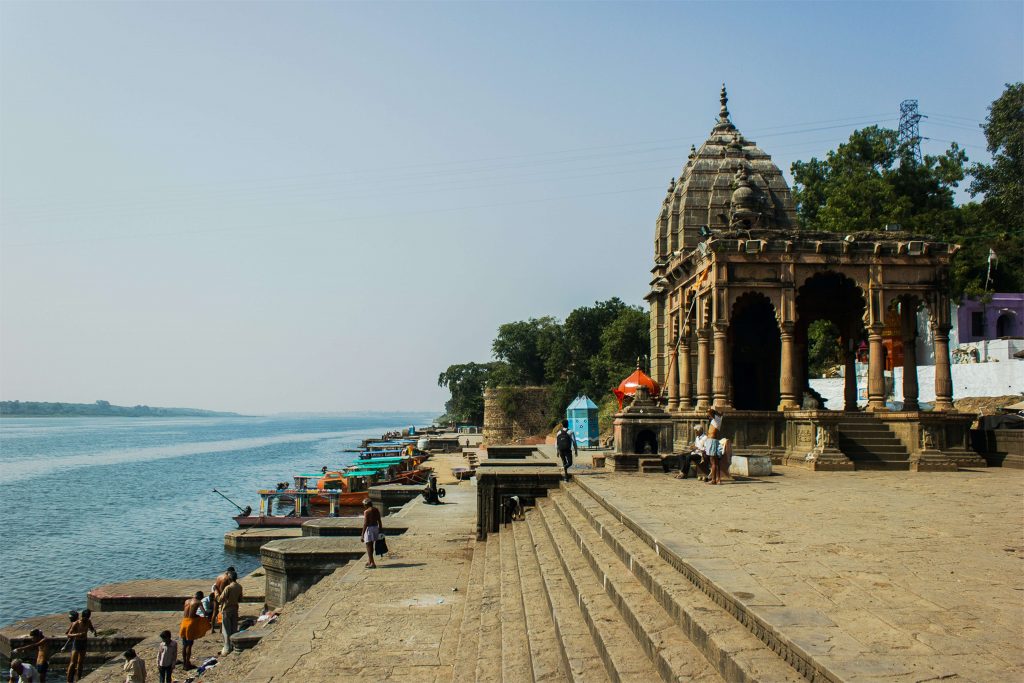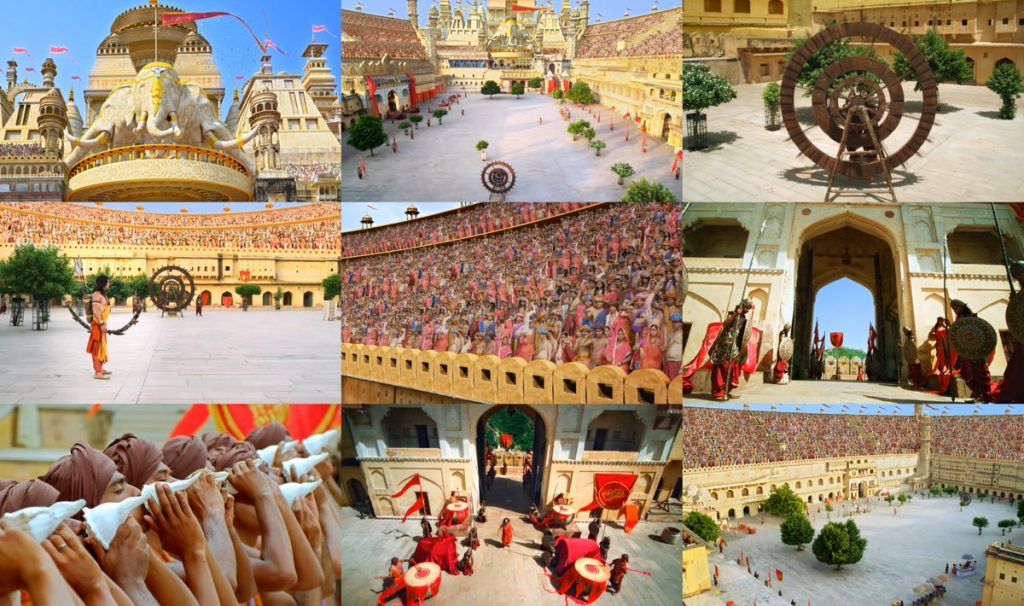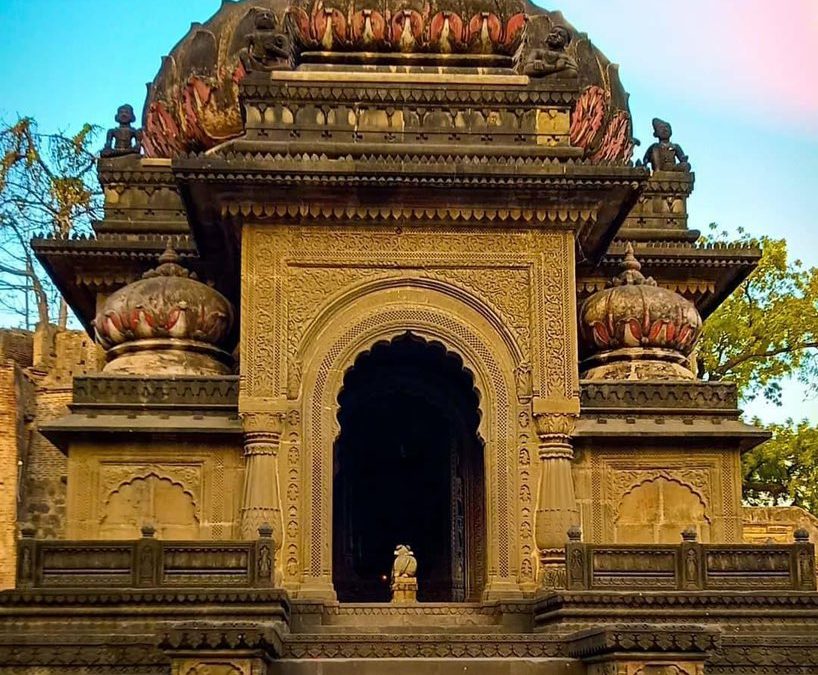India is a historically and culturally rich country. Every corner is filled and brimming with a lot of historical and even mythological references. Also being a secular country with a religious rich history as well, we have stories and lore from the times of Mughals, Marathas, Peshwas, The British Raj and our struggle for independence. Every small town and city have a story of its initiation and a story behind the beliefs and traditions there.
The town of Maheshwar (historicaly known as Mahishmati) in Madhya Pradesh, is one such town that has a long running history that has left its mark in forms of beautiful architecture and infrastructure of the town. Maheshwar is a town in the Khargone district of Madhya Pradesh, India. It is located on State Highway-38 (Barwaha-Bandheri Highway), 13 km east of National Highway 3 (Agra-Mumbai Highway), and 91 km from Indore, the state’s commercial centre. The town is located on the Narmada River’s north bank. It was the realm of Chaktavartin Samrat Sahastraarjun, a Heheya ruler, Kartavirya Arjuna. After many years, it was the capital of Malwa under the rule of Maratha Holkar until 6 January 1818, when Malhar Rao Holkar III relocated the capital to Indore.

In Hindi, the phrase Maheshwar means “Great God,” and it is an epithet of Lord Shiva. References to this place and its history can be found in the epics of India “Ramayana” and “Mahabharata.”
Mythological references of Maheshwar –
(a) Ramayana:
Maheshwar is thought to have been built on the location of the ancient city of Somvanshya Shastrarjun Kshatriya, which served as the capital of king Kartavirya Arjuna (Shree Shastrarjun), as described in the Sanskrit epics Ramayana and Mahabharata.
According to tradition, King Sahasrarjun and his 500 wives went to the river for a picnic one day. When the ladies demanded a large play area, the King used his 1000 arms to halt the powerful Narmada. Ravana flew by in his Pushpak Vimana while they were all having a good time. When he observed the empty river bed downstream, he felt it would be a great site to worship to Lord Shiva. He began to pray after creating a Shivalinga out of sand.
When Sahasrajuna’s women had finished playing and exited the riverbed, he let the rivers flow. The massive torrent rushed down, carrying Ravana’s Shivalinga down with it and disrupting his prayers. Ravana became enraged and pursued Sahasrajuna, challenging him. The powerful Ravana, armed to the teeth, was in for a tremendous surprise. Ravana was pinned to the ground by the powerful Sahasrarjuna and his 1000 limbs. Then he set ten lights on each of his heads and one on each of his hands. After tying up Ravana, Sahasrarjuna took him home and bound him to his son’s cradle pole. Ravana, humiliated, remained imprisoned until his freedom was achieved. Jamadagni rishi, Renuka Devi, and Lord Parashurama, all of whom are mentioned in Kartavirya Arjuna’s tale, all resided nearby.
(b) Mahabharata:
Marriage as a civil institution was not ubiquitous in then Mahishmati (now Maheshwar), unlike in the rest of Aryavarta, according to the Mahabharata, which is also related in the Telugu-language Andhra Mahabharata in ‘Sabha parva.’
According to mythology, Mahishmati was governed by a Nishada king called Nila. King Nila had a very lovely daughter. So much so that Agni (the god of fire) fell in love with her, which she returned. The princess would constantly stay near her father’s sacred fire, prompting it to flame with intensity. And even if fanned, King Nila’s sacred fire would not burn until stirred by the soft breath of her lips.

Agni, in the shape of a Brahman, begins wooing the princess for a long time. However, the pair was found one day by the king, who got enraged. Nila then ordered that the Brahman be punished in accordance with the law. The famous deity erupted in rage at this, and seeing the awful flame, the king became scared and bowed his head low to the ground. The King praises Lord Agni and declares that he cannot punish a deity who is responsible for the birth of the Vedas, as well as the wellspring of all Knowledge and Dharma. The pacified Agni then offers Nishada a blessing, and the King begs that his realm be protected from any invaders.
It is worth noting that the Sahasrarjun temple in Maheshwar still burns 11 lamps in honour of Lord Agni blessing the Kingdom. Alternatively, this custom is related to Sahasrarjun queens embarrassing the ten-headed Ravana in captivity by burning candles on his brows.
Historical importance of Maheshwar –
Maheshwar was the capital of the famous Maratha queen Rajmata Ahilya Devi Holkar in the late eighteenth century. She adorned the city with various buildings and public works, including her palace, as well as multiple temples, a fort, and riverside ghats (broad stone steps which step down to the river). For several months, Jagadguru Kripaluji Maharaj has been doing akhand (continued) sankirtan outside the Shiva temple in Maheshwar. Despite the fact that Kripaluji was from Mahu (30 kilometres from Maheshwar), he regularly visited this location in his early days with Krishna followers to perform sankirtan on the banks of the Narmada river at Maheshwar.
Nag Panchami, Gudi Padava, Teez (New Year festivities according to the Hindu calendar), All Mondays of Shravan month (DOLA of Kashivishwnath on final Monday, bhang is offered as Shiva prasad), Mahashivratri, Samoti Amavas, and all other Indian holidays are held in Maheshwar.
We all know and have wanted to see the Mahishmati Kingdom from the fictitious story of Bahubali, and it is interesting to note that such a city actually did exist, now known as Maheshwar. Some Bollywood and Tamil/Kollywood films depict the magnificent beauty of Maheshwar and the Narmada River. Some of the movies shot at Maheshwar include “Ashoka,” Tulsi (by actor and director Sachin), Mahashivratri, A R Rehman’s music video, Tamil movie Alaipayuthey’s song “Snehithane…” and “yaro yaro di…” directed by Maniratnam, and “yaro yaro di…” Tamil film Andrew Vasanth Louis directed Leelai’s song “Oru killi oru killi…” from Yuvan Shankar Raja’s musical Vishnuvardhan directed the song “Adadada Arrambame…” from the Tamil film Arrambam.
If you are planning a trip to visit historic and beautiful places in India, Maheshwar one of the most unmissable destinations. Visiting a town so rich and booming with history and culture, never disappoints.


